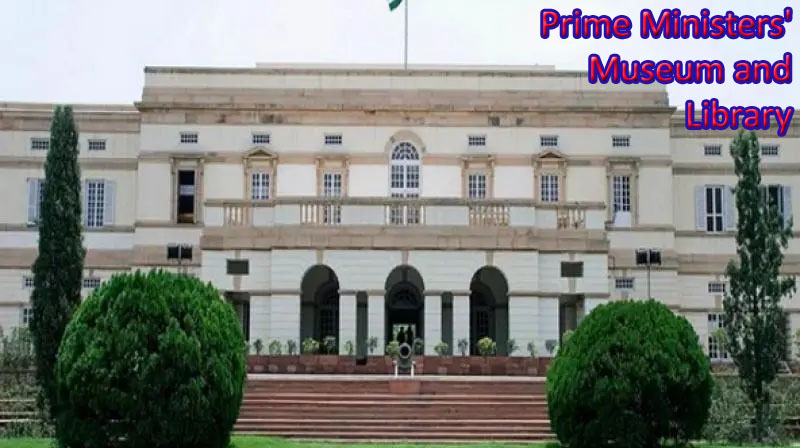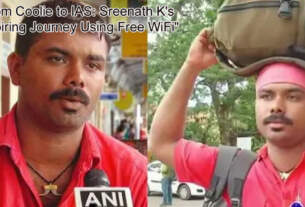The historic Nehru Memorial Museum and Library (NMML) has undergone a remarkable transformation, embracing a new identity as the Prime Ministers’ Museum and Library (PMML) Society, effective from August 14, 2023. This bold move by the Indian government signifies a dynamic shift towards democratization and diversification of the institution’s scope, as confirmed by PMML Vice-Chairman A Surya Prakash on X, formerly known as Twitter.
The decision to rename the NMML was reached during a special meeting of the NMML Society held in mid-June. The Culture Ministry, led by Defence Minister Rajnath Singh, who serves as the Vice-President of the Society, initiated the change to honor the legacy of India’s Prime Ministers and their enduring contributions to the nation.
The inception of this project was endorsed by the Executive Council of NMML during its 162nd meeting in November 2016. The result of this endeavor, the Pradhanmantri Sangrahalaya, was inaugurated on April 21 of the preceding year. Notably, the inauguration ceremony was absent of any presence from the Nehru-Gandhi family, despite their significant role in India’s political history, with three members having served as Prime Ministers.
The PMML represents a seamless fusion of historical and modern elements, starting with the revitalized Nehru Museum building. This section boasts advanced technological displays highlighting the life and contributions of Jawaharlal Nehru, India’s first Prime Minister. Transitioning to a newly constructed facility, the museum endeavors to narrate the journey of each Prime Minister in steering the nation through multifaceted challenges and fostering comprehensive development. In this collective endeavor, the contributions of all Prime Ministers are honored, underscoring the institution’s commitment to democratizing institutional memory.
The transformation of Nehru Memorial Museum into the Prime Ministers’ Museum symbolizes an evolution that embraces the nation’s rich political history and leadership legacy. Previously the residence of India’s first Prime Minister, Jawaharlal Nehru, Teen Murti Bhavan underwent a significant metamorphosis following his passing in 1964, transitioning into the Nehru Memorial Museum. In 2016, the Narendra Modi government laid the foundation for the Prime Ministers’ Museum within the same campus.
Teen Murti Bhavan, designed by Robert Tor Russell in 1929-1930 as Flagstaff House, was originally the residence of the Commander-in-Chief of the British Indian Army. Following Nehru’s demise, meticulous efforts were made to preserve the memories associated with his time there. However, footfall gradually dwindled over the years. The recent renovation and incorporation of modern technology have breathed new life into the museum, attracting approximately 80,000 visitors within just four months.
The museum’s renovation extended beyond aesthetics to the digital realm. Each room and gallery now offers an immersive experience through cutting-edge technology, allowing visitors, particularly the youth, to engage with information about the Constitution of India, the developmental initiatives of Prime Ministers, their living conditions, and various facets of their lives through interactive displays.
Significantly, Nehru’s personal spaces, including his bedroom, study room, guest room, and the childhood rooms of his daughter, former Prime Minister Indira Gandhi, have been preserved meticulously. These spaces provide an unaltered glimpse into their lives, with minor adjustments for cleanliness.
An integral part of the museum is the Toshakhana, housing Nehru’s gifts from abroad. This collection, now open for public viewing, has been expanded to include gifts presented to three other Prime Ministers: Atal Bihari Vajpayee, Manmohan Singh, and Narendra Modi. The Modi government’s intention is to provide the public, including the younger generation, a window into the living conditions, work, thoughts, and contributions of India’s first Prime Minister, Jawaharlal Nehru. The renovation of the Nehru Memorial Museum underscores the importance of preserving and sharing the legacy of India’s leadership.
In conclusion, the transformation of the Nehru Memorial Museum into the Prime Ministers’ Museum represents a significant step towards commemorating India’s diverse and dynamic political history. The fusion of historical preservation and modern technology creates an immersive experience that engages visitors, enriching their understanding of the nation’s leadership legacy and democratic journey.
bhalakatha
prayas
mind plugin
#bhalakatha #prayas #MindPlugin





